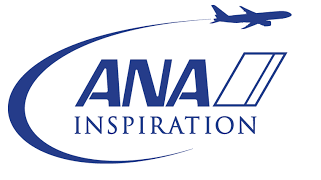The Everest Base Camp Gokyo Lake Trek is one of the most scenic and adventurous treks in Nepal, combining two of the most popular trekking routes in the Everest region. This trek takes you to both Everest Base Camp (EBC) and Gokyo Lakes, offering stunning views of the world’s highest mountain, Mount Everest, along with other peaks like Lhotse, Makalu, Cho Oyu, and many others. Here’s a general outline of the trek:
Key Highlights:
- Gokyo Lakes: These turquoise glacial lakes are surrounded by majestic mountains, offering a serene and beautiful environment.
- Everest Base Camp (EBC): A once-in-a-lifetime experience to stand at the base of the highest peak in the world.
- Gokyo Ri: A viewpoint from where you can get panoramic views of the Himalayas, including Everest, Lhotse, and Cho Oyu.
- Namche Bazaar: A vibrant Sherpa town and the main trading hub of the Khumbu region.
- Sagarmatha National Park: A UNESCO World Heritage site with diverse flora and fauna, including the endangered snow leopard.
Difficulty:
This trek is considered moderate to difficult due to the high altitude and the physical demands of trekking for several days.
Best Time to Trek:
The best seasons are:
- Spring (March to May)
- Autumn (September to November)
If you’re planning to do this trek, it’s important to be prepared for both the physical demands and the altitude. Would you like more detailed information or tips for the trek?
Three passes trek
The Three Passes Trek is a popular and challenging trek in the Everest region of Nepal. It involves crossing three high-altitude passes: Kongma La (5,535m), Cho La (5,420m), and Renjo La (5,340m), making it a strenuous trek suitable for experienced trekkers.
This trek not only offers breathtaking views of the surrounding mountains, including Mount Everest, Lhotse, Makalu, and Cho Oyu, but also takes you through remote Sherpa villages, Buddhist monasteries, and the beautiful Gokyo Lakes. The trek is considered a more off-the-beaten-path route compared to the standard Everest Base Camp trek, providing a quieter, more intimate experience of the Khumbu region.
Would you like more details on the itinerary or any tips for the trek?
A short trek to Everest Base Camp is an incredible experience! While the full trek usually takes around 12-14 days, a shorter version is still possible, typically around 8-10 days, depending on your fitness level and how much time you want to spend acclimatizing.
Here’s a simplified itinerary for a shorter trek to Everest Base Camp:
Day 1: Fly to Lukla and trek to Phakding (2,610m)
- Flight from Kathmandu to Lukla, then a short trek to Phakding.
- This is a longer trek, but it’s the first significant stop. Namche Bazaar is a major hub for trekkers.
Day 3: Acclimatization day in Namche Bazaar
- Rest day to help with acclimatization. You can explore the town or do a short hike to a viewpoint.
- A beautiful trek through forests and across suspension bridges, reaching the famous Tengboche Monastery.
Day 5: Trek from Tengboche to Dingboche (4,360m)
- A scenic trek, passing through villages and offering stunning views of the Himalayas.
Day 6: Acclimatization day in Dingboche
- Another rest day to help with altitude adjustment. You can hike to a higher elevation for a couple of hours and return.
Day 7: Trek from Dingboche to Lobuche (4,940m)
- The trek to Lobuche is challenging, as you’re getting higher into the Himalayas.
Day 8: Trek from Lobuche to Gorak Shep, then to Everest Base Camp (5,364m)
- This is the final stretch! After reaching Gorak Shep, you’ll trek to Everest Base Camp and enjoy the views of the Khumbu Icefall and surrounding peaks.
Day 9: Return trek to Pheriche or Dingboche
- Start heading back down to aid in acclimatization.
Day 10: Trek back to Lukla
- Final trek back to Lukla for the flight back to Kathmandu.
The trek is challenging due to the altitude, so it’s important to pace yourself and take plenty of rest. Would you like help planning a trip or need more details about any part of this trek?

